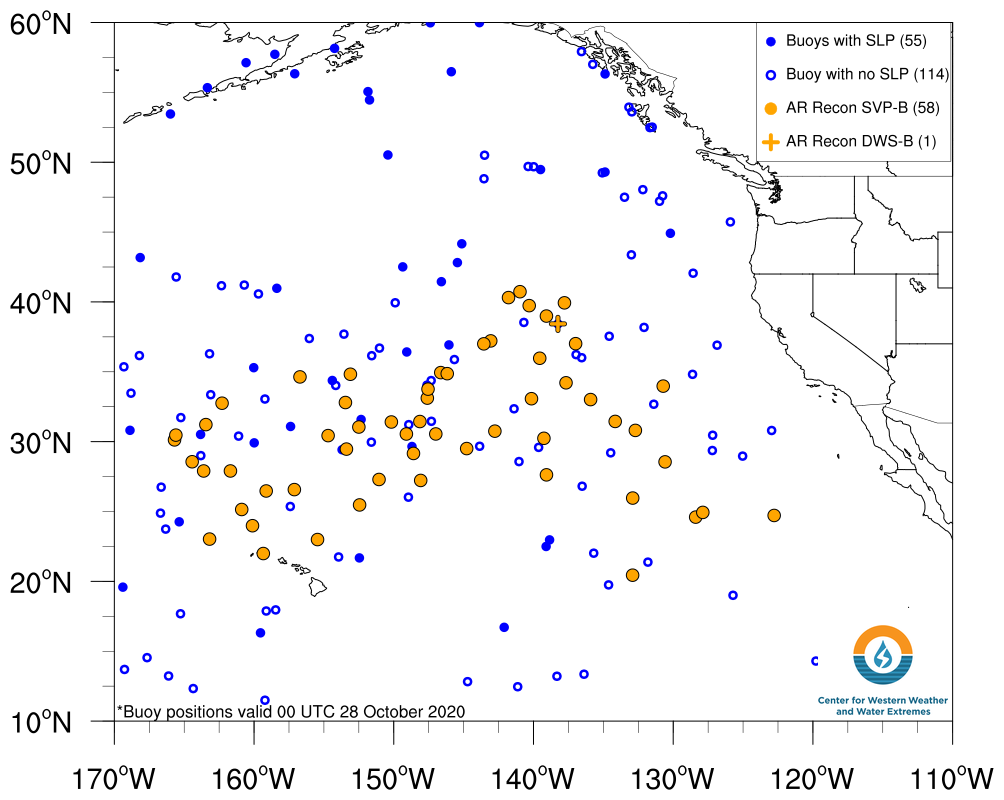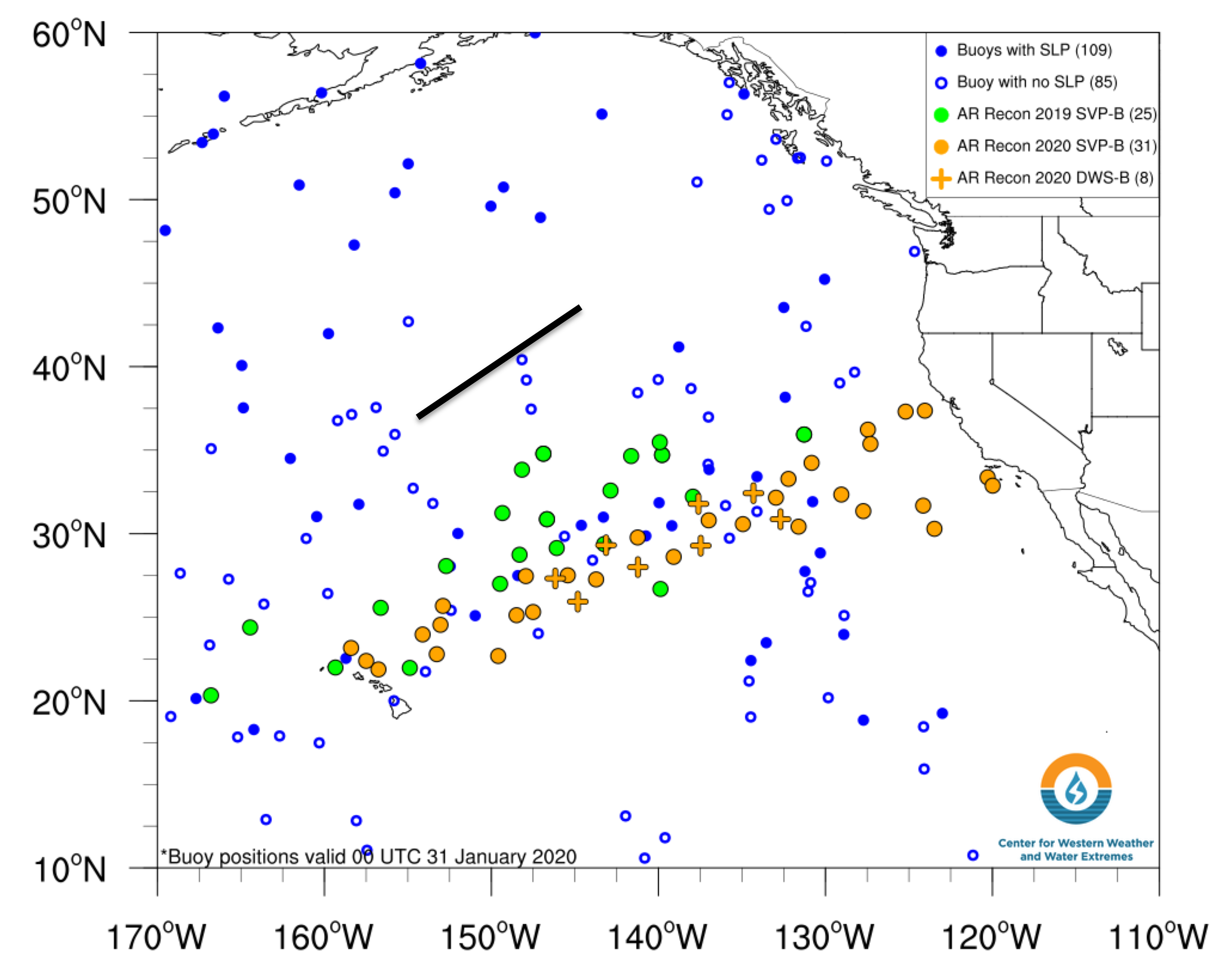
NEWS
Improved West Coast Weather Reports Supported by SVP Drifters with Sea Level Pressure Sensors
The Global Drifter Program and Lagrangian Drifter Laboratory (LDL) are helping the Center for Western Weather and Water Extremes (CW3E) to collect critical data to support their forecasts and assessments. Figure 1 shows the drifters that the CW3E and LDL have deployed that are still reporting (solid orange), as well as other drifters in the domain: with sea level pressure (SLP; orange) and without SLP (blue). Figure 2 shows the original deployment. Additional drifters with SLP sensors and Directional Wave Spectra Barometer Drifters (DWSBDs) were deployed in late February 2020 for the region where the residence time is long (the so-called “eddy desert”). It is expected the buoys will last six months and will provide data where no other resources are available. The deployment strategy and locations are done in conjunction with the CW3E’s Anna Wilson, Brian Kawzenuk, Luca Monache, and Marty Ralp, and ECMW’s David Lavers and Bruce Ingleby.
Video 1. Air deployment of SVPB and DWSBD drifters. Each box contains two SVPB and one DWSBD drifter. Credit: 53rd Weather Reconnaissance Squadron
Figure 2. Initial configuration of the drifter array. Thirty-two SVPB drifters were deployed in January 2019, with 25 sill reporting as of January 31, 2020. An extra 32 SVPB dirfters were deployed by a ship of opportunity on January 28, together with eight DWSBD. The black line (145°W, 45°N; 155°W, 35°N) shows the additional deployment via C-130 aircaft (US Air Force, 53rd WRS), of eight boxes (16 SVP-B buoys and 8 DWS-B buoys – 24 total) over the week of February 9. Credit: Brian Kawzenuk


